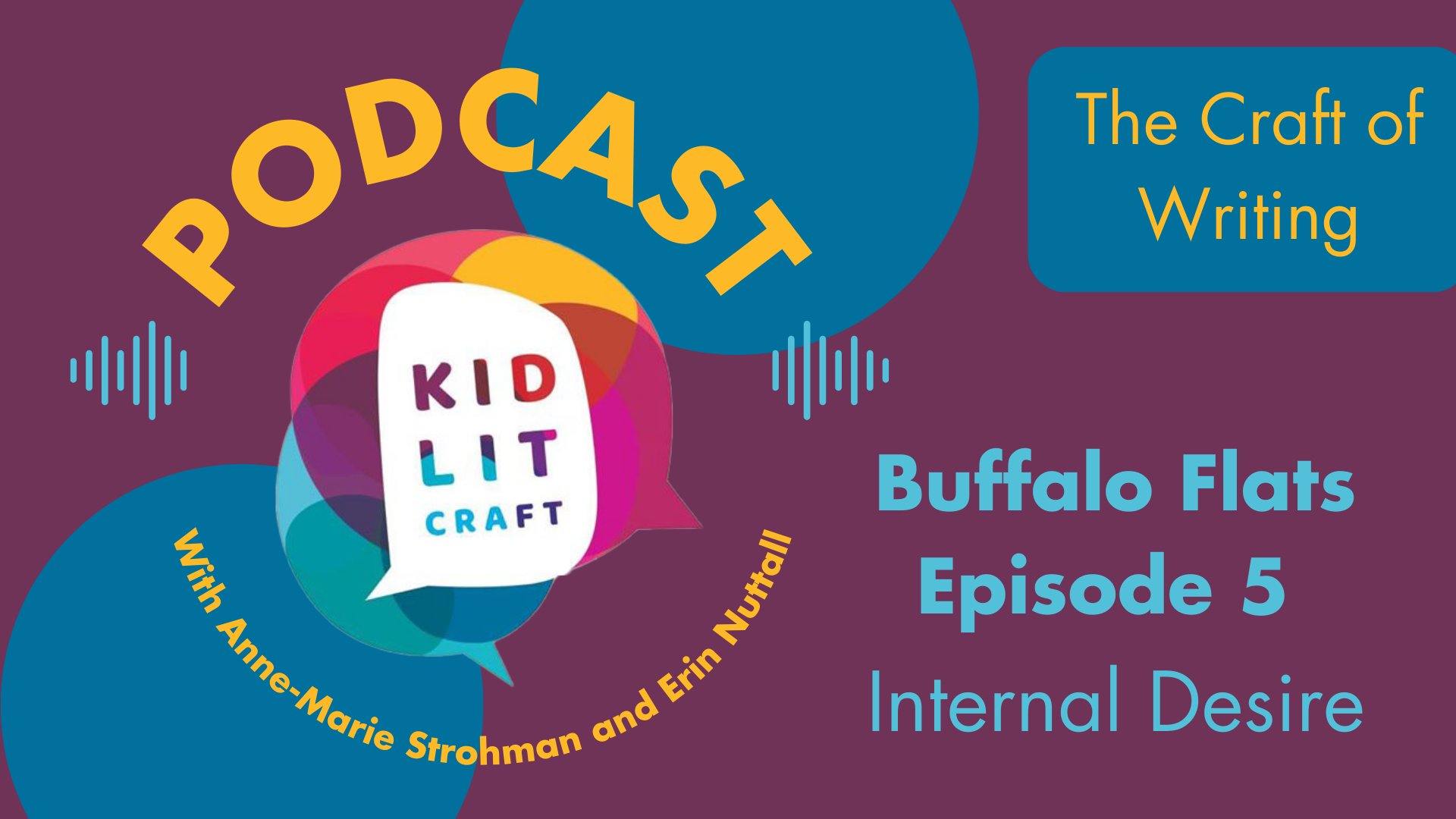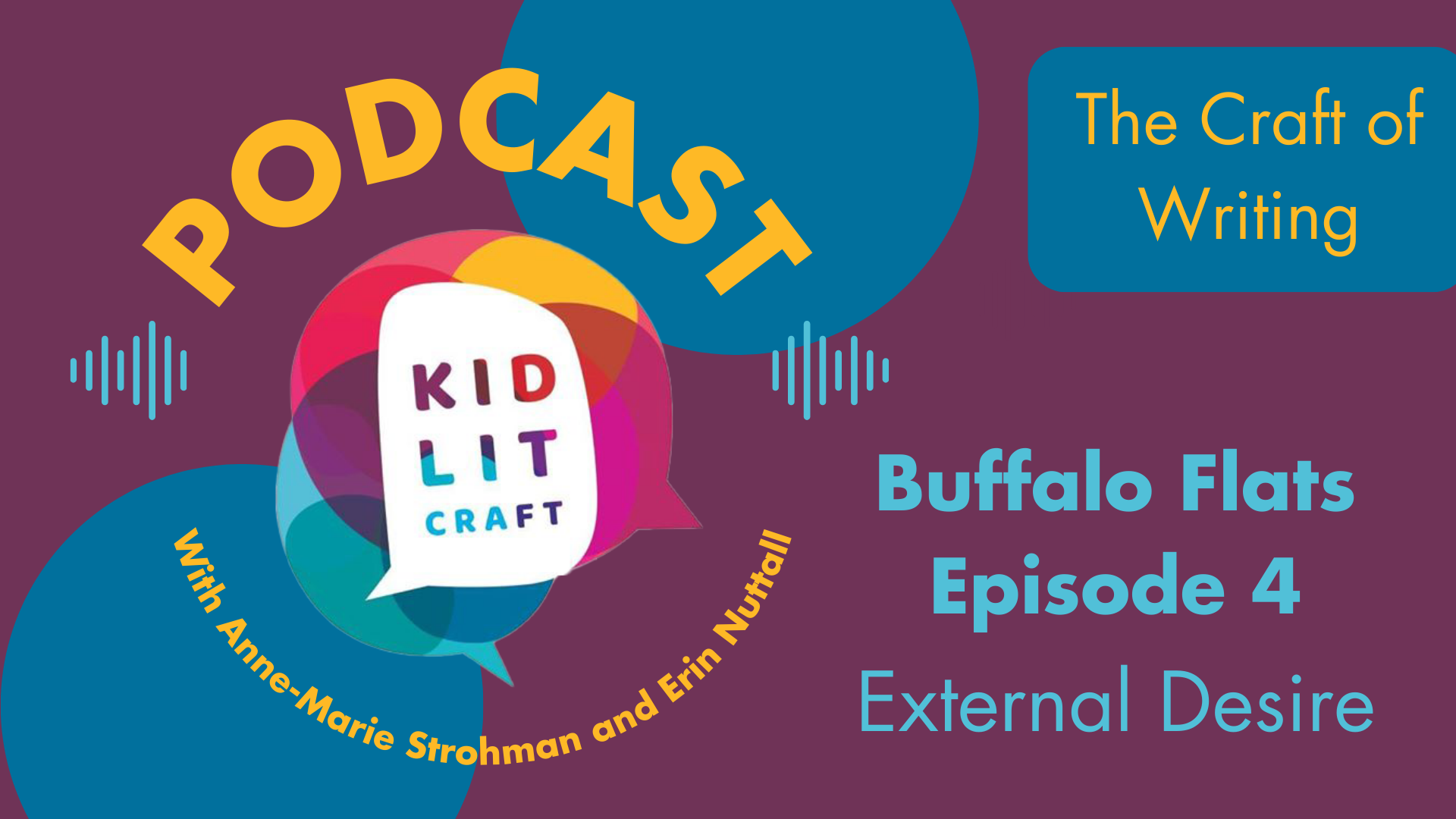hello!
JOIN US IN EXPLORING OTHERS' CRAFT AND BUILDING OUR OWN
Today we’re focusing on the main character, Rebecca’s internal desire, the obstacles that get in the way, and what will happen if she doesn’t get that desire.
Today we’re focusing on the main character, Rebecca’s external desire, the obstacles that get in the way, and what will happen if she doesn’t get that desire.
Episode 13: Martine Interview, Part 1 In this episode, we interview Martine Leavitt herself! She talks to us about her inspiration for Buffalo Flats, the painful process of writing it, and her secret to sticking with writing when it’s hard. Martine had so much wisdom to share that we split the interview into two […]
Find out what’s next for the KidLit Craft podcast, and exciting upcoming offerings from KidLit Craft. Links: Sign up for the KidLit Craft Newsletter For information on the Writing MG for PB Authors class, email Anne-Marie at editor@kidlitcraft.com. Or find out more here: INFO SHEET. KidLit Craft website Martine Leavitt’s Buffalo Flats Our next […]
Throughout Buffalo Flats, Martine Leavitt uses rich language and evocative metaphors. We break down how and why she uses specific language and metaphors, and to what effect. We also talk about how to decide what language and metaphors to use in your own work. Links: KidLit Craft website Martine Leavitt’s Buffalo Flats Lolo’s Light […]
In Buffalo Flats, Rebecca belongs to a religious community that exists within the larger community in the Northwest Territories of Canada. In this episode we look at how Martine makes this community recognizable to those in it and accessible to those not, and we share our personal experiences reading about the community. The craft techniques […]
We explore how Martine incorporates feminism into historical fiction in a way that respects history and characters, by finding friction points between the character’s desires and their experience of the world. Also, Erin emotes about corsets. Links: KidLit Craft website Martine Leavitt’s Buffalo Flats The book Erin references set in 15th-Century China is Lisa See’s […]
At risk of making Martine’s humor less funny, we take apart the humor in Buffalo Flats, from set-ups and punchlines to adding a funny twist, from individual sentences to full subplots. Links: KidLit Craft website Martine Leavitt’s Buffalo Flats Laurel & Hardy, “Chickens Come Home” Pizza Pirate This is Us The KidLit Craft Podcast is […]
In this episode, we’re talking ROMANCE! We look at how Martine Leavitt sets up the balance between physical intimacy and emotional intimacy, uses contrast in secondary romances, and manages a perfectly balanced love triangle for the main character, Rebecca, in her YA novel Buffalo Flats. We also talk about how to write a perfect romantic […]
A novel requires more than just one main plot. In this episode, we look at three major subplots in Buffalo Flats by Martine Leavitt, one that involves Rebecca’s family, one that involves her local community, and one that involves the larger community. We look at how Martine weaves in these subplots and how she makes […]

